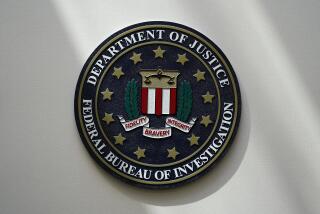Boeing discloses more ‘very disturbing’ messages about 737 Max

A new batch of messages between Boeing Co. employees on the development of the 737 Max paints a “very disturbing picture” of concerns about the plane, according to an aide to a House committee.
The documents were turned over to the Federal Aviation Administration on Monday, the agency said in a statement. The disclosure came the same day Boeing ousted its chief executive.
At least some of the messages were written by the same Boeing pilot whose 2016 messages were released in October and were the subject of sharp questioning by lawmakers, according to a person familiar with their contents who wasn’t authorized to discuss them.
The communications haven’t been released publicly. The staff of the Transportation and Infrastructure Committee are still reviewing the messages and have not provided specific details about what they contain.
Boeing’s 737 Max design was supposed to save money and help compete with Airbus. Instead, it created a crisis that killed hundreds of people, ate up billions of dollars and led to CEO Dennis Muilenburg’s ouster.
“But similar to other records previously disclosed by Boeing, the records appear to point to a very disturbing picture of both concerns expressed by Boeing employees about the company’s commitment to safety and efforts by some employees to ensure Boeing’s production plans were not diverted by regulators or others,” a committee aide said in a statement.
“The committee will continue to review these and other records provided by Boeing as part of the committee’s ongoing investigation,” the aide said.
Boeing brought the emails to the FAA and Congress “as part of our commitment to transparency with our regulators and the oversight committees,” the company said in a statement.
“As with prior documents referenced by the committee, the tone and content of some of these communications does not reflect the company we are and need to be,” the company said. It said it had made changes to enhance safety.
The company’s stock fell 1.3% to $333 on Tuesday.
This was the second time the Chicago company has delayed turning over to the FAA sensitive messages related to the development of the 737 Max jetliner, which was grounded in March after a design flaw was linked to two fatal crashes, one in Indonesia and one in Ethiopia. The earlier episode prompted a rebuke by the agency and helped lead to growing tensions between the regulator and the plane maker.
The FAA statement didn’t comment on the content of the emails, saying only that they were under review. The company’s decision to turn the emails over to the FAA was reported earlier by the Seattle Times.
The way Boeing handled the second set of records rankled the agency, according to a person familiar with the issue who wasn’t authorized to speak about it. In recent days, Boeing told the FAA the messages existed but didn’t initially provide them or disclose their contents, the person said.
Dennis Muilenburg stepped down Monday as Boeing’s chief executive, at least partly as a result of deteriorating relations with the FAA, according to a statement from the company’s board.
In October, Boeing disclosed to the FAA instant messages and emails by a high-ranking company pilot who in 2016 expressed misgivings about the software implicated in two fatal crashes of the Max that killed a total of 346 people.
Boeing had known about those messages since early in the year and turned them over to the Justice Department in February. It didn’t immediately give them to the FAA because of the criminal investigation into how the plane was approved.
The delay angered the FAA, which oversees Boeing. One of the agency’s key tenets is that entities it oversees must disclose safety issues or possible breaches of regulations. In some circumstances, failing to tell the agency about such an issue may be considered a legal violation.
“The FAA finds the substance of the document concerning,” the agency said in a statement Oct. 18. “The FAA is also disappointed that Boeing did not bring this document to our attention immediately upon its discovery.”
The November 2016 instant messages disclosed in October were between Mark Forkner, then Boeing’s chief technical pilot for the 737, and another 737 technical pilot, Patrik Gustavsson.
Forkner expressed concern that the flight-control feature later implicated in the crashes was “running rampant” and said he might have unknowingly misled the FAA about it. In separate emails he sent to an unnamed FAA official, he said he was “jedi-mind tricking” regulators outside the United States into accepting Boeing’s suggested training for the Max.
A lawyer for Forkner, David Gerger, said issues raised in the messages were the result of balky simulator software and not a result of problems with the plane itself. Forkner believed the plane was safe and didn’t mislead the FAA, Gerger said.
Gerger didn’t respond to requests to comment on the latest messages and whether they involved his client.
More to Read
Inside the business of entertainment
The Wide Shot brings you news, analysis and insights on everything from streaming wars to production — and what it all means for the future.
You may occasionally receive promotional content from the Los Angeles Times.










